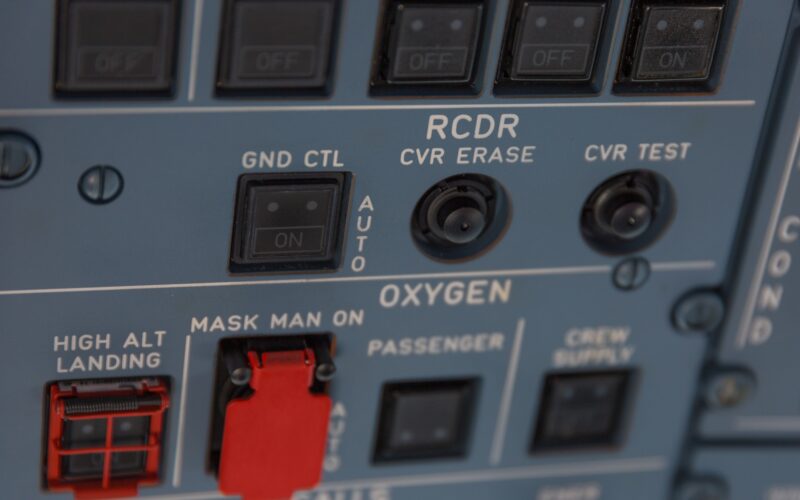The chair of the National Transportation Safety Board (NTSB) has appeared in front of the United States House of Representatives Committee on Transportation and Infrastructure, to call for more data to be available for investigators, including cockpit video recorders and longer Cockpit Voice Recorder (CVR) recordings.
Jennifer Homendy, who began her testimony, called “FAA [Federal Aviation Administration – ed. note] Reauthorization: Enhancing America’s Gold Standard in Aviation Safety”, remarked that the efforts of many stakeholders have led to the US having a “record level of safety, as the number of deaths associated with US civil aviation accidents decreased from 541 in 2009 to 376 in 2021, a decrease of roughly one-third”.
The chairwoman still emphasized that the NTSB can only provide recommendations, as the board “does not have authority to promulgate operating standards, nor do we certificate organizations, individuals, or equipment”.
“Our goal is to identify issues and advocate for safety improvements that, if implemented, would prevent injuries and save lives,” Homendy continued.
Addressing recent near-miss incidents at US airports
The need for longer Cockpit Voice Recorder (CVR) records was raised once again following two near-miss incidents that occurred at US airports over the past few weeks.
First, there was an incident at John F. Kennedy International Airport (JFK), New York in January 2023, which involved an American Airlines Boeing 777 crossing an active runway without authorization while a Delta Air Lines Boeing 737 was on its take-off roll. Then, on February 4, 2023, a FedEx Express Boeing 767F almost landed on top of a Southwest Airlines Boeing 737 at Austin International Airport (AUS). According to a separate statement by Homendy, the 767F and the 737 might have been vertically separated by fewer than 100 feet (30.5 meters).
However, the NTSB chairwoman did not cite the FedEx Express and Southwest Airlines near-miss incident at AUS as an example in her testimony. Homendy used the JFK near-miss alongside a separate incident that occurred in July 2017 at San Francisco International Airport (SFO) when an Air Canada Airbus A320 almost landed on a taxiway where four aircraft were lined up prior to departure.
Homendy also indicated that the NTSB is investigating two wrong runway landings from June 2022. Firstly, a FedEx Express Boeing 757 landed on runway 18R instead of runway 18L at Tulsa International Airport (TUL). Meanwhile, a United Airlines Boeing 737 MAX-9 chose the wrong runway at Pittsburgh International Airport (PIT).
“In aviation, data, audio, and video recorders capture and store critical information that can help investigators determine the cause of accidents while helping companies and operators take immediate steps to prevent accidents,” Homendy continued in her testimony. While “recorders are readily available, easily installed, and largely affordable” she added, many US-based airlines operating under Part 135 and Part 91 regulations do not have these critical technological solutions, as the Federal Aviation Administration (FAA) has yet to mandate them.
“Current FAA regulations require 2- hour CVR recording capability and provide guidance to the flight crew on how to safeguard CVR data after an accident or incident,” said Homendy, adding that “valuable CVR data continues to be overwritten and therefore unavailable for safety investigations”.
She pointed out the near-miss events at JFK in January 2023 and SFO in July 2017 as two events where investigators were unable to recover the CVR data. Thus, the NTSB recommended that the FAA address these issues and mandate the installation of “CVRs with a minimum 25-hour recording capability on all newly manufactured airplanes required to have a CVR, and to retrofit these CVRs on existing aircraft required to have flight recorders,” Homendy noted. The NTSB issued the recommendation in 2018.
Commercial passenger airlines based in the US have been associated with three fatalities since a DHC Q400-8 operating Colgan Air Flight 3407 crashed in February 2009, claiming the lives of 50 people.
The three fatalities saw one person struck by a landing Southwest Airlines Boeing 737 at AUS, while another Southwest 737 suffered an uncontained engine failure, resulting in debris penetrating the fuselage and partially sucking out a passenger. The most recent incident involved a ground handler at Montgomery Regional Airport (MGM), in Alabama, US, when an Envoy Air employee, a regional associate of American Airlines, was ingested by an Embraer E175’s engine in December 2022.

